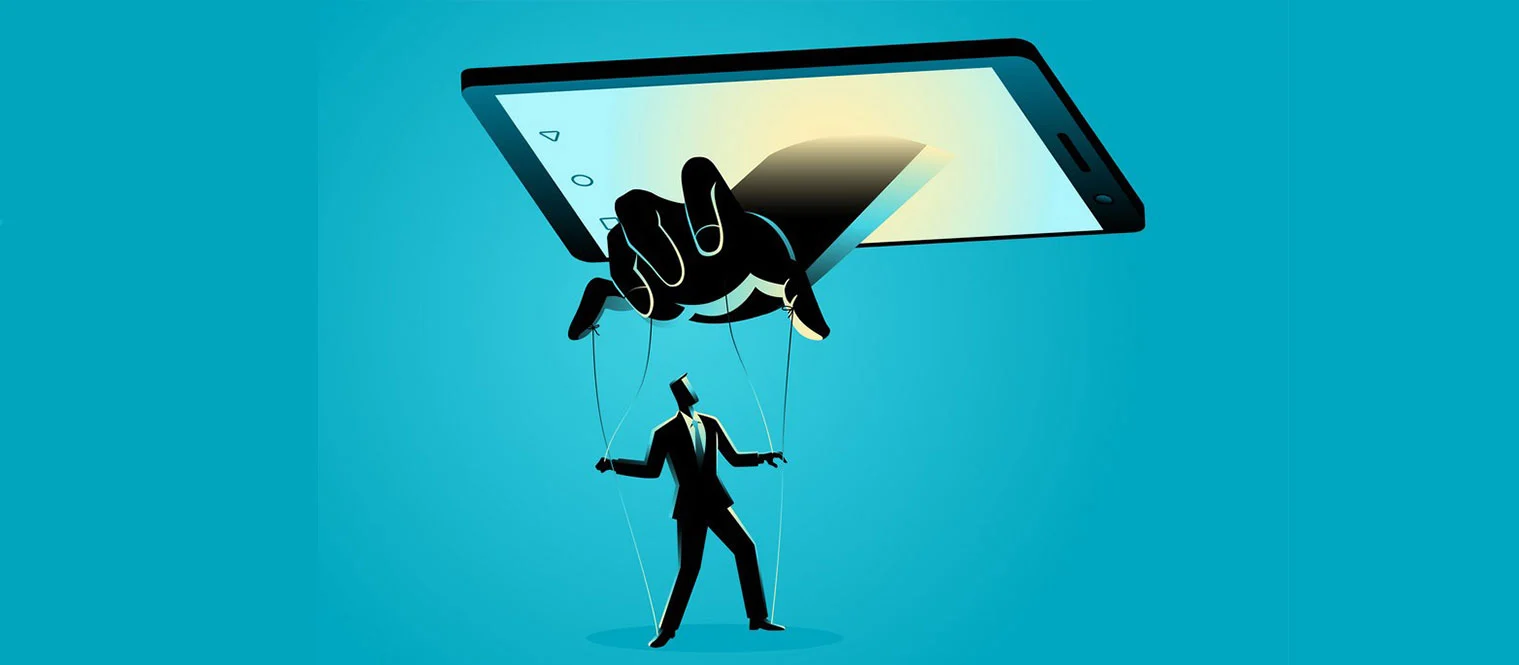

Rushabh Trivedi
C0006
Sep 2023
Researchers studying behaviour have been attempting to comprehend how pervasive smartphones have become in people’s daily lives for more than a decade. The modern workplace has observed a considerable increase in mobile phone usage for a wide variety of reasons. To this end, prior research reveals that the use of such technology has provided employees with greater workplace flexibility and simultaneously facilitated multiple business processes (Cousins & Robey, 2015). However, it is also commonly recognized that cell phone usage has been a considerable source of counterproductive behaviours that compromise one’s performance at work.
The present article addresses and reviews concerns and challenges associated with extensive smartphone usage and its association with interpersonal and work-related consequences. In doing so, the article orbits around a specific form of cell phone usage behaviour known as phubbing (Phone + Snubbing) that can be described as the extent to which individuals are distracted and preoccupied because of their cell phone in the presence of another person (Roberts & David, 2016). Finally, the article provides remedies for organisations to counter or strategically lessen the effects of phubbing.
Phubbing affects a variety of outcomes because of its pervasive and generalizable nature. For instance, workplace phubbing has a negative association with job engagement. Moreover, people with perceptions of being phubbed may have lower intrinsic motivation and impaired job performance. Experiencing phubbing as a recipient may also influence one’s intention to leave the organisation. Also, phubbing literature in leadership establishes that supervisory or boss phubbing may lead to employees having low levels of trust in the supervisor and also experiencing job dissatisfaction (Roberts & David, 2020; Yousaf, Imran Rasheed, Kaur, Islam, & Dhir, 2022).
Furthermore, phubbing has also been linked with employees demonstrating enhanced workplace incivility and experiencing emotional exhaustion (Tandon, Dhir, Talwar, Kaur, & Mäntymäki, 2022). Finally, prior literature also reveals that phubbing may impair romantic relationships within the family. This facet of phubbing is important for organisational managers to understand, as work-family literature indicates the extent to which family ties can influence work-related employee outcomes (Lim & Tai, 2014; Roberts & David, 2016).
Given the outcomes generated by phubbing, managers seriously need to consider phubbing as a controllable behaviour. Some effective measures can involve awareness and training programs designed specifically to avoid smartphone usage at work, especially where one is engaged in dyadic transactions. Further, organizations can also work on various job designs to help people feel motivated and remain engaged in work. For example, beyond designing jobs based on rotation, enlargement, and enrichment, managers can design jobs more playfully. Playful work designs can keep employees engaged and indulge less in phubbing (Scharp, Bakker, & Breevaart, 2022). Moreover, effective communication from top management and the development of an in-house enterprise social media mechanism may also mitigate the negative effects of employee phubbing. Managers must ensure that there are strict rules concerning cell phone usage for tasks requiring high levels of monitoring and attention. Using a smartphone in such scenarios can be erroneous and even fatal at times. Organisational culture of mutual respect must be fostered, and employees must be trained and communicated the appropriate use of smartphones at work. Finally, managers need to measure and keep a track of employee’s phubbing behaviour through feedback, performance related consequences, and observational strategies.
In sum, phubbing is a counterproductive workplace behaviour that carries undesirable outcomes. Phubbing negatively influences several individual, interpersonal, and organisational-level outcomes. Managers need to attribute paramount importance to such technology-driven behaviours. Organisations must implement a sound technology/smartphone policy, such as incorporating mobile-free zones. Although such policies will differ from organisations to organisations, organisations with a lack of an impressive technology policy may witness a hike in non-work phubbing.
Cousins, K., & Robey, D. (2015). Managing work-life boundaries with mobile technologies.Information Technology & People, 28(1), 34-71. doi:10.1108/ITP-08-2013-0155
Lim, S., & Tai, K. (2014). Family incivility and job performance: A moderated mediation model of psychological distress and core self-evaluation. Journal of Applied Psychology, 99(2), 351-359. doi:10.1037/a0034486
Roberts, J. A., & David, M. E. (2016). My life has become a major distraction from my cell phone: Partner phubbing and relationship satisfaction among romantic partners. Computers in Human Behaviour, 54, 134-141.cdoi:https://doi.org/10.1016/j.chb.2015.07.058
Roberts, J. A., & David, M. E. (2020). Boss phubbing, trust, job satisfaction and employee performance. Personality and Individual Differences,155, 109702. doi:https://doi.org/10.1016/j.paid.2019.109702
Scharp, Y. S., Bakker, A. B., & Breevaart, K. (2022). Playful work design and employee work engagement: A self-determination perspective. Journal of Vocational Behaviour, 134, 103693. doi:https://doi.org/10.1016/j.jvb.2022.103693
Tandon, A., Dhir, A., Talwar, S., Kaur, P., & Mäntymäki, M. (2022). Social media induced fear of missing out (FoMO) and phubbing: Behavioural, relational and psychological outcomes. Technological Forecasting and Social Change, 174, 121149. doi:https://doi.org/10.1016/j.techfore.2021.121149
Yousaf, S., Imran Rasheed, M., Kaur, P., Islam, N., & Dhir, A. (2022). The dark side of phubbing in the workplace: Investigating the role of intrinsic motivation and the use of enterprise social media (ESM) in a cross-cultural setting. Journal of Business Research, 143, 81-93. doi:https://doi.org/10.1016/j.jbusres.2022.01.043